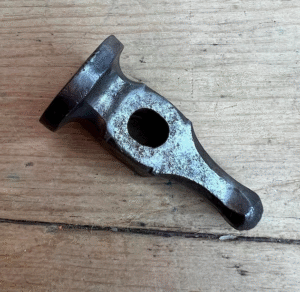Ever held a tool that feels like it holds centuries of secrets? If you’ve come across a vintage chasing hammer head, you’ve touched a piece of true craftsmanship history. Small, simple, and powerful, this humble hammer was once essential in every artisan’s toolbox—and its legacy still echoes today.
What Is a Chasing Hammer, and Why Was It So Loved?
Forget the heavy carpenter’s hammer. The chasing hammer is a refined instrument of art. With one flat (or slightly domed) face and one rounded face, it was designed not for brute force, but for precision and finesse.
-
The rounded side is for texturing and shaping.
-
The flat side is used to smooth and refine metal surfaces.
It was more than just a hammer—it was the metalworker’s brush, used to “paint” detail into gold, silver, copper, and more.
Why It Was a Must-Have Tool
When working with soft metals, raw strength doesn’t cut it. Control, balance, and feel were everything. The chasing hammer gave artisans the ability to apply pressure delicately—just enough to form a curve, a groove, or a decorative pattern.
Each strike had to be just right. Too soft, and the detail wouldn’t show. Too hard, and the piece was ruined. Using this tool was like learning an instrument—you needed rhythm, patience, and years of practice.
A Tool That’s Been Around Since Ancient Times
This isn’t a modern invention. Chasing hammers have been used for thousands of years:
-
Ancient Egypt and Mesopotamia: Used in repoussé metalwork to craft sacred items and jewelry.
-
Medieval Europe: Essential for goldsmiths, armorers, and religious artisans.
-
The Industrial Era: Even as machines rose, the chasing hammer stayed because handcrafted detail couldn’t be replicated by mass production.
Fun fact: The copper skin of the Statue of Liberty was shaped using chasing and repoussé techniques—yes, with tools just like this one.
Craftsmanship That Left a Mark (Literally)
From etched Renaissance armor to the ornate designs on ceremonial weapons, the chasing hammer helped bring beauty to metal. It was never just a functional tool—it was a conduit for storytelling, used to turn raw material into something meaningful and lasting.
Why It Still Matters Today
Even in a high-tech world, many metal artists still reach for these vintage hammers. Why?

-
They’re balanced and perfectly weighted.
-
They carry history—a soul that new tools just don’t have.
-
They connect creators to centuries of tradition.
Collectors treasure them. Artisans display them. Museums preserve them. Because these tools remind us that real beauty takes time, skill, and passion.
A Symbol of Mastery and Legacy
A vintage chasing hammer head is more than just a piece of steel—it’s a symbol of mastery. Each one holds its own story, its own wear, its own marks from generations past.
And in the hands of a skilled craftsperson today, it becomes something timeless once again.
So, do you recognize this classic tool?
If so, you’re not just looking at a hammer. You’re holding a legacy—a link in a chain of artistry that stretches back through history. And whether you’re a maker, a collector, or just someone who appreciates the beauty of the handmade, the chasing hammer is proof that some tools never lose their magic.

Sophia Reynolds is a dedicated journalist and a key contributor to Storyoftheday24.com. With a passion for uncovering compelling stories, Sophia Reynolds delivers insightful, well-researched news across various categories. Known for breaking down complex topics into engaging and accessible content, Sophia Reynolds has built a reputation for accuracy and reliability. With years of experience in the media industry, Sophia Reynolds remains committed to providing readers with timely and trustworthy news, making them a respected voice in modern journalism.